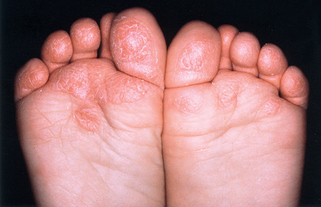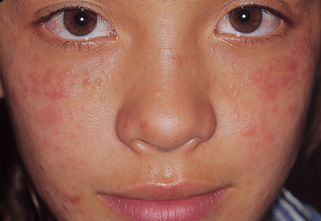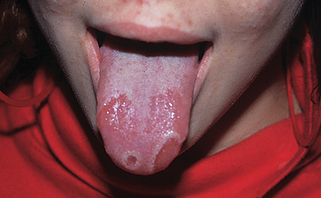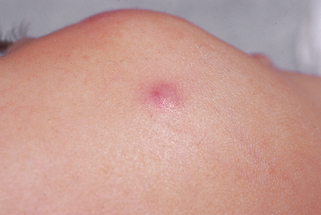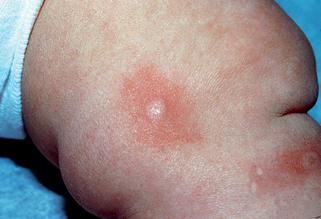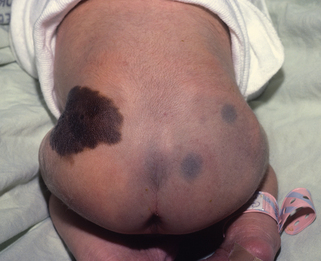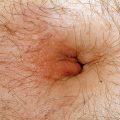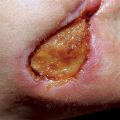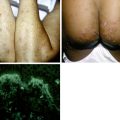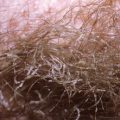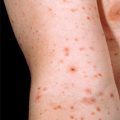Chapter 58 Pediatric dermatology
Trovato MJ, Schwartz RA, Janniger CK: Tinea capitis: current concepts in clinical practice, Cutis 77:93–99, 2006.
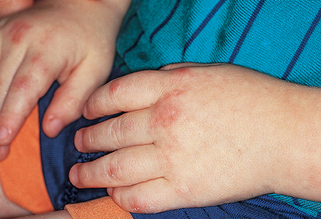
Figure 58-2. Dermatomyositis. Note Gottron’s papules, which present as purple papules over the finger joints.
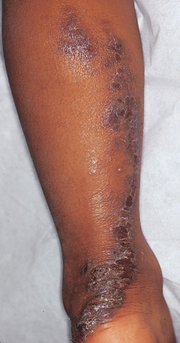
Figure 58-3. Lichen striatus presenting as hyperkeratotic linear plaque on the lower leg of a child.
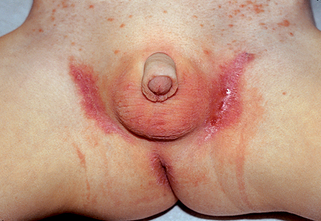
Figure 58-7. Langerhans cell histiocytosis demonstrating erythematous scale and crusted papule in the groin of a child.
Windebank K, Nanduri V: Langerhans cell histiocytosis, Arch Dis Child 94:904–908, 2009.
Lin RL, Janniger CK: Pyogenic granuloma, Cutis 74:229–233, 2004.
Lee LA: The clinical spectrum of neonatal lupus, Arch Dermatol Res 30:107–110, 2009.
Smith SD, Fischer G: Paediatric vulval lichen sclerosus, Australas J Dermatol 50:243–248, 2009.

